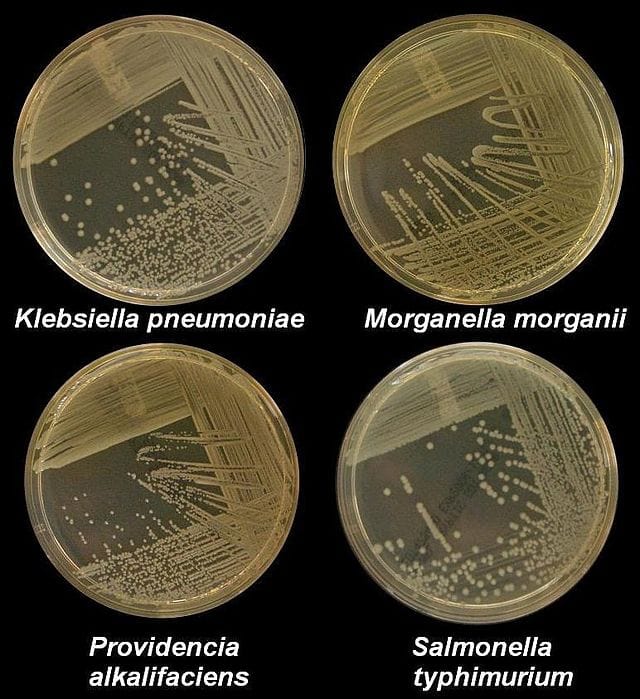Nutrient Agar: Composition, Preparation and Uses
Nutrient Agar is a general purpose, nutrient medium used for the cultivation of microbes supporting growth of a wide range of non-fastidious organisms. Nutrient agar is popular because it can grow a variety of types of bacteria and fungi, and contains many nutrients needed for the bacterial growth.
Composition of Nutrient Agar
0.5% Peptone
It is an enzymatic digest of animal protein. Peptone is the principal source of organic nitrogen for the growing bacteria.
0.3% beef extract/yeast extract
It is the water-soluble substances which aid in bacterial growth, such as vitamins, carbohydrates, organic nitrogen compounds and salts.
1.5% agar
It is the solidifying agent.
0.5% NaCl
The presence of sodium chloride in nutrient agar maintains a salt concentration in the medium that is similar to the cytoplasm of the microorganisms.
Distilled water
Water is essential for the growth of and reproduction of micro-organisms and also provides the medium through which various nutrients can be transported.
pH is adjusted to neutral (7.4) at 25 °C.
Preparation of Nutrient Agar
1. Suspend 28 g of nutrient agar powder in 1 litre of distilled water.
2. Heat this mixture while stirring to fully dissolve all components.
3. Autoclave the dissolved mixture at 121 degrees Celsius for 15 minutes.
4. Once the nutrient agar has been autoclaved, allow it to cool but not solidify.
5. Pour nutrient agar into each plate and leave plates on the sterile surface until the agar has solidified.
6. Replace the lid of each Petri dish and store the plates in a refrigerator.
Uses of Nutrients Agar
1. It is frequently used for isolation and purification of cultures.
2. It can also be used as a means for producing the bacterial lawns needed for antibiotic sensitivity tests. In actuality, antibiotic sensitivity testing is typically performed on media specially formulated for that purpose.
Pictures

Source: Wikipedia

Source: CHARLES UNIVERSITY


Tidak ada komentar:
Posting Komentar